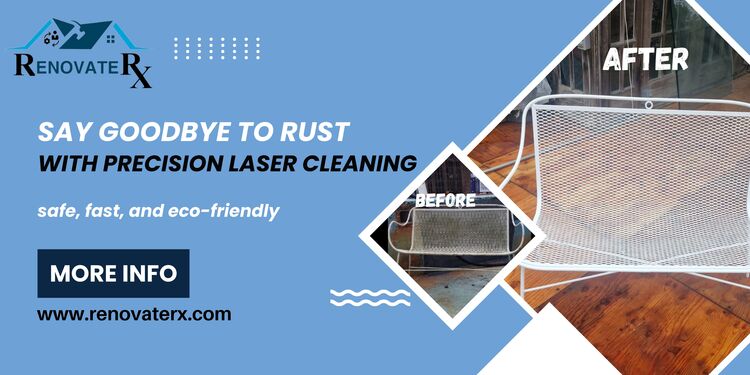
Rust is an unavoidable consequence of metal exposure to moisture and air, leading to corrosion that weakens structures, machinery, and countless items. Traditionally, rust removal has involved labor-intensive methods such as sanding, chemical treatments, or abrasive blasting. However, recent technological advancements have introduced a more precise, efficient, and environmentally friendly solution: laser rust removal.
What is Laser Rust Removal?
Laser rust removal is a non-contact, high-precision method for eliminating rust and other surface contaminants from metal surfaces. This innovative technology utilizes laser beams to vaporize or dislodge rust without damaging the underlying material. The process, known as laser ablation, works by delivering controlled pulses of laser light onto the rusted surface, effectively removing unwanted layers.
How Does Laser Rust Removal Work?
The principle behind laser rust removal is quite straightforward:
-
Laser Emission: A focused laser beam is directed at the rusted surface.
-
Absorption and Heating: The rust, being less reflective than the underlying metal, absorbs the laser’s energy more effectively. This causes the rust to heat up rapidly.
-
Vaporization: The intense heat vaporizes the rust, breaking down its chemical structure and causing it to evaporate or be lifted off the surface.
-
Residue Removal: The rust particles are dislodged, and a clean surface remains, free of any damage to the metal underneath.
The process can be fine-tuned for different types of rust and surface conditions by adjusting the laser’s wavelength, power, and pulse duration.
Benefits of Laser Rust Removal
-
Precision: The laser can target rust with pinpoint accuracy, leaving the surrounding metal untouched. This is especially important for intricate parts or surfaces with complex geometries.
-
Non-Abrasive: Unlike sandblasting or grinding, laser cleaning does not erode or damage the underlying metal.
-
Environmentally Friendly: Laser rust removal does not use chemicals or produce toxic waste, making it an eco-friendly option.
-
Cost-Effective: Over time, the efficiency and reduced labor requirements of laser cleaning can lead to significant cost savings.
-
Versatility: This method is suitable for a wide range of applications, including automotive restoration, industrial maintenance, and heritage conservation.
Applications of Laser Rust Removal
Laser rust removal can be used in various industries, such as:
-
Automotive: Restoring classic cars and maintaining machinery parts.
-
Aerospace: Cleaning components without introducing surface wear.
-
Manufacturing: Ensuring equipment and tools remain rust-free and operational.
-
Conservation: Protecting and restoring historical artifacts and metal structures.
Conclusion
Laser rust removal represents a significant advancement in the field of surface cleaning and maintenance. Its precision, eco-friendly nature, and versatility make it an ideal solution for industries seeking to improve efficiency and reduce environmental impact. Whether for industrial maintenance or preserving historical artifacts, laser rust removal offers a cutting-edge approach that outshines traditional methods.


